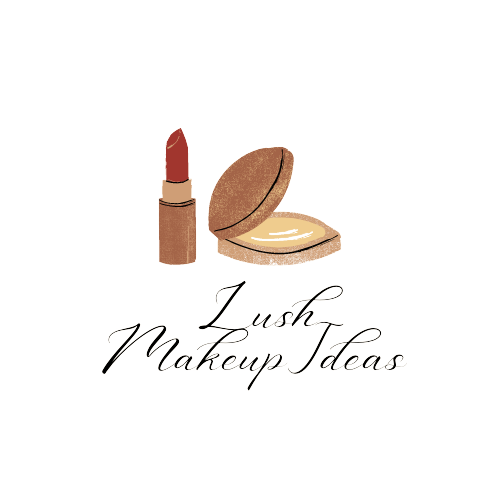In this article, you’ll find a collection of friendly and easy-to-follow face paint tutorials. Whether you’re a beginner or looking to learn new techniques, we’ve got you covered with step-by-step instructions and helpful tips. From cute animal designs to spooky Halloween looks, you’ll discover various ideas to unleash your creativity and have fun. So grab your brushes and get ready to transform yourself into amazing characters!
Introduction to Face Paint Tutorials
Welcome to the world of face paint tutorials! Whether you are a beginner or an experienced face painter looking to expand your skills, this comprehensive guide will provide you with everything you need to know. From understanding the basics of face painting to exploring advanced techniques, we will cover it all. Get ready to unleash your creativity and transform faces into works of art!
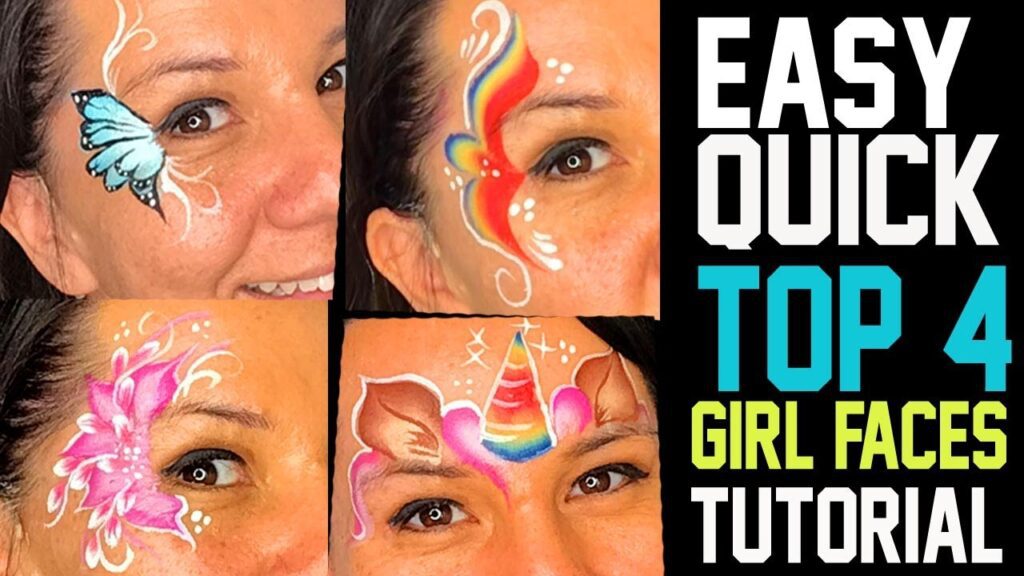
This image is property of i.ytimg.com.
Understanding the Basics of Face Painting
Before delving into the world of face paint tutorials, it is important to understand the fundamentals of face painting. This includes learning about different types of face paints, such as water-based paints, cream-based paints, and oil-based paints. Each type has its own advantages and disadvantages, and it is essential to choose the right type for your intended design and the age of the individual being painted.
Additionally, understanding color theory and how to mix and blend colors will help you create stunning face paint designs. Familiarize yourself with the color wheel, primary colors, secondary colors, and complementary colors. This knowledge will allow you to create visually appealing designs and help you choose the right colors for specific themes or characters.
Choosing the Right Tools and Materials
To achieve professional-looking results, it is important to invest in high-quality face painting tools and materials. Start with a good set of brushes that are specifically designed for face painting. Different brushes will allow you to create different effects, from thin and precise lines to broader strokes for blending.
In addition to brushes, you will need a variety of sponges for blending and applying base colors. Opt for cosmetic-grade sponges that are soft and gentle on the skin. It is also crucial to choose face paints that are safe, non-toxic, and approved for use on the face. Remember to check for any allergens or potential skin irritants before applying the paints to a client’s face.
Prepping the Face for Painting
Before diving into the actual painting process, it is essential to properly prep the face. Cleanse the face using a gentle facial cleanser to ensure that the skin is free from dirt, oil, and makeup. This step will help the face paint adhere better and last longer.
Next, apply a thin layer of moisturizer to hydrate and protect the skin. This will create a barrier between the face paint and the skin, preventing any potential skin irritation. Allow the moisturizer to fully absorb before applying the face paint.
Different Face Paint Techniques
Once you have mastered the basics of face painting, it’s time to explore different techniques to elevate your designs. Here are some popular face paint techniques to try:
Creating Basic Designs with Lines and Dots
This technique involves using a fine-tipped brush to create intricate designs using lines and dots. From butterfly wings to tribal patterns, this technique allows you to create beautiful designs with precise details. Practice your brush strokes and experiment with different pressures to create varying thicknesses of lines.
Mastering the Art of Blending Colors
Blending colors on the face can create stunning and realistic effects. Start by applying two or more colors next to each other on a sponge, then gently press the sponge onto the skin. Use a circular motion to blend the colors seamlessly. This technique works particularly well for creating realistic animal fur or smooth transitions in background colors.
Using Stencils for Intricate Patterns
If you’re looking to create intricate and detailed designs, stencils can be a great tool. Stencils come in a variety of shapes and patterns, allowing you to create intricate designs with ease. Simply hold the stencil against the skin and apply the face paint over it. Remove the stencil to reveal a perfectly formed design.
Exploring Watercolor and Brush Techniques
Watercolor techniques involve diluting face paint with water to create sheer washes of color. This technique is perfect for creating a soft and ethereal look. Use a brush that is slightly damp and lightly load it with diluted face paint. Apply the paint to the face using gentle strokes and build up the color gradually.
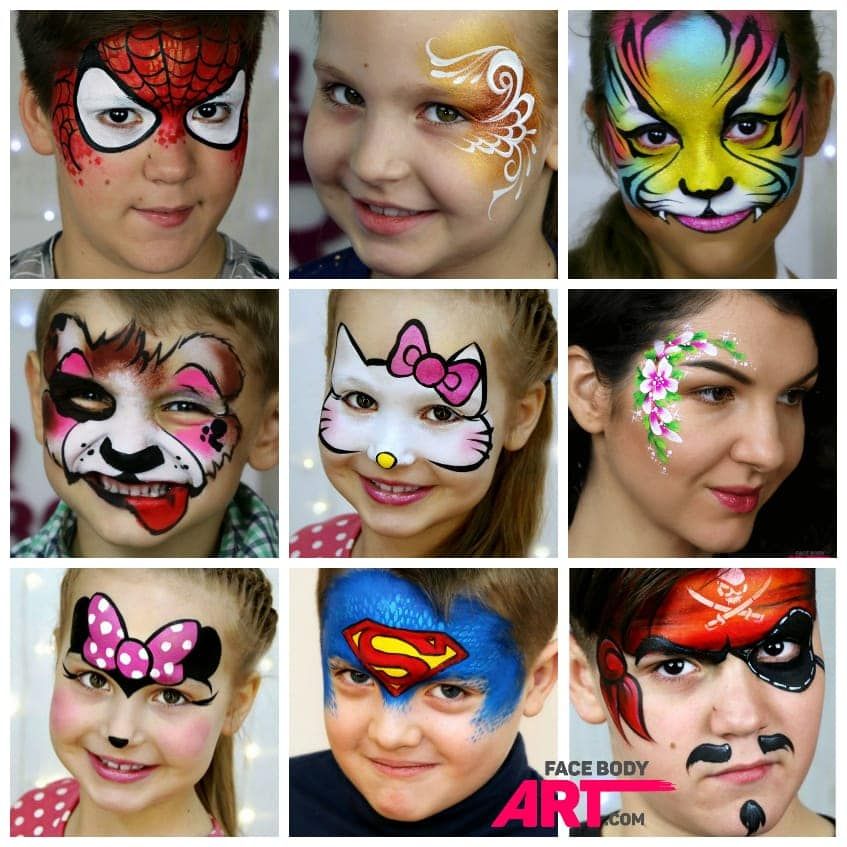
This image is property of i.pinimg.com.
Face Paint Ideas for Kids
Face painting is a popular activity at children’s parties, and there are endless possibilities when it comes to designs. Here are some ideas to get you started:
Animal-Inspired Face Painting
Kids love transforming into their favorite animals. From tigers and lions to butterflies and cats, animal-inspired face painting designs are always a hit. Use bright colors and bold patterns to create an eye-catching and playful look. Add some glitter or shimmer for an extra touch of magic.
Superhero and Princess Designs
For little superheroes and princesses, face painting can help bring their imaginations to life. Create designs inspired by their favorite characters, such as Spiderman, Elsa, Batman, or Cinderella. Use face paint to draw masks, crowns, or superhero emblems, and watch their faces light up with excitement.
Festive and Holiday-Themed Faces
Face paint can also be used to celebrate special occasions and holidays. Create designs inspired by Halloween, Christmas, Easter, or any other holiday or festival. Pumpkins, ghosts, snowflakes, and reindeer are just a few examples of festive designs that will surely delight children of all ages.
Face Paint Ideas for Adults
Face painting is not just for kids. Adults can also enjoy the transformative power of face paint. Here are some ideas for adults:
Fantasy and Mythical Character Designs
Unleash your inner unicorn, mermaid, or fairy with fantasy-inspired face paint designs. Use vibrant colors, shimmer powders, and rhinestones to create a magical and ethereal look. Let your creativity run wild and transport yourself to a world of fantasy.
Day of the Dead Sugar Skulls
Inspired by Mexican tradition, Day of the Dead sugar skull designs are a popular choice among adults. Use black and white face paints to create intricate skull designs, and add pops of color with flowers and other decorative elements. These designs are not only visually striking but also carry cultural significance.
Glamorous and Elegant Face Paint
For special occasions or themed events, glamorous and elegant face paint designs can take your look to the next level. From masquerade masks to intricate lace patterns, these designs are perfect for adding a touch of sophistication and glamour to your ensemble.
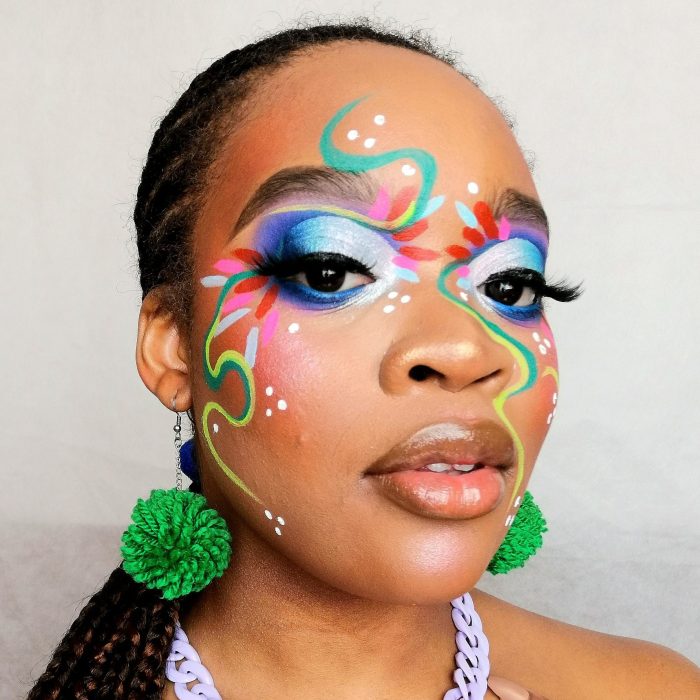
This image is property of www.snazaroo.com.
Tips for Face Paint Application
While the techniques and designs are important, there are also several tips and tricks that can help you achieve professional results. Here are some tips to keep in mind:
Avoiding Allergic Reactions
To avoid allergic reactions, always perform a patch test before applying face paint to someone’s face. Apply a small amount of paint to an inconspicuous area, such as the inner arm, and wait for at least 24 hours to check for any signs of skin irritation or allergic reactions.
Ensuring Long-Lasting and Smudge-Proof Face Paint
To ensure that your face paint lasts all day and doesn’t smudge or smear, set it with a translucent setting powder. Gently dust the powder over the face paint using a large powder brush or a puff. This will help the face paint adhere to the skin and stay in place for longer.
Blending and Layering for a Professional Finish
To create depth and dimension in your designs, don’t be afraid to blend and layer colors. Start with a base layer and gradually build up lighter or darker shades to create shadows and highlights. Use a clean brush or sponge to blend the colors seamlessly for a professional and polished finish.
Face Paint Safety and Hygiene
Safety and hygiene should always be a top priority when it comes to face painting. Here are some important considerations:
Cleansing and Preparing the Skin
Before applying face paint, it is crucial to cleanse and prepare the skin properly. Ensure that the face is clean and free from any dirt, oil, or makeup. Use a gentle cleanser suitable for the skin type and follow it up with a moisturizer to create a smooth canvas.
Proper Storage and Sanitization of Face Paint
Face paints should be stored in a cool, dry place away from direct sunlight. Avoid exposing the paints to extreme temperatures, as this can affect their quality. Additionally, ensure that your brushes and sponges are cleaned and sanitized after each use to prevent the spread of bacteria.
Common Safety Precautions
When using face paints, it is important to follow some common safety precautions. Avoid applying face paint near the eyes or mouth, as this may cause discomfort or irritation. Make sure to use cosmetic-grade glitter and avoid using craft glitter, which can be sharp and potentially harmful if it comes into contact with the eyes.
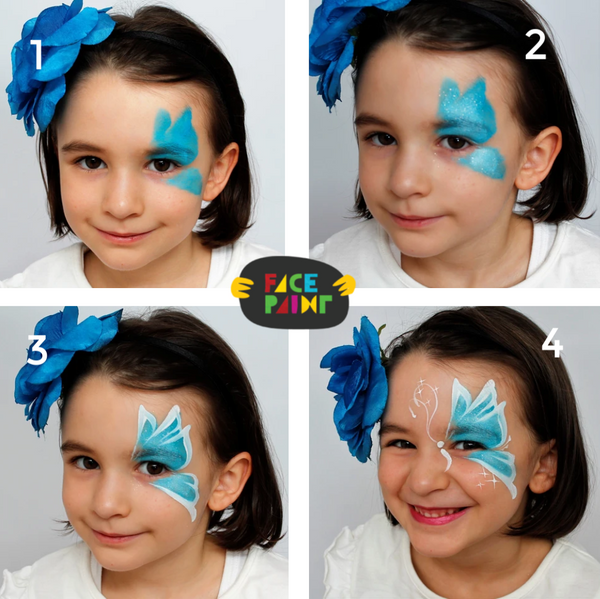
This image is property of cdn.shopify.com.
Advanced Face Paint Techniques
Once you have mastered the basics, you may want to challenge yourself with advanced face paint techniques. Here are a few techniques to explore:
Creating Realistic 3D Effects
By using shading and highlighting techniques, you can create realistic 3D effects on the face. Pay attention to light sources and shadows and use contouring techniques to add depth and dimension to your designs. With practice, you can transform a flat surface into a three-dimensional work of art.
Mastering Face Contouring
Face contouring involves using dark and light shades to enhance or change the shape of someone’s face. By strategically applying darker shades to create shadows and lighter shades to highlight certain areas, you can sculpt the face and create the illusion of different facial features.
Using Special Effects Makeup Techniques
Take your face paint designs to the next level by incorporating special effects makeup techniques. Explore the world of fake wounds, scars, and fantasy creatures. Use prosthetics, liquid latex, and other specialty products to create realistic and eye-catching designs.
Troubleshooting and Common Mistakes
Even the most experienced face painters encounter challenges along the way. Here are some tips for troubleshooting common face paint issues:
Fixing Smudged or Uneven Face Paint
If you’ve accidentally smudged or made a mistake in your face painting design, don’t panic. Use a wet cotton swab or a clean brush to carefully remove the smudged area. Once the area is dry, you can reapply the face paint and fix the mistake.
Dealing with Sensitive Skin Reactions
Some individuals may have sensitive skin that reacts to face paints. If you encounter any signs of skin irritation, remove the face paint immediately using a gentle cleanser and water. Apply a soothing cream or moisturizer to calm the skin. It is important to have a conversation with your clients beforehand to check for any allergies or sensitivities.
Avoiding Common Face Paint Mistakes
One common mistake in face painting is using too much water, which can cause the colors to appear diluted and watery. Use a minimal amount of water and gradually add more if necessary. Additionally, practice good color hygiene by cleaning your brushes and sponges properly between colors to avoid color contamination.
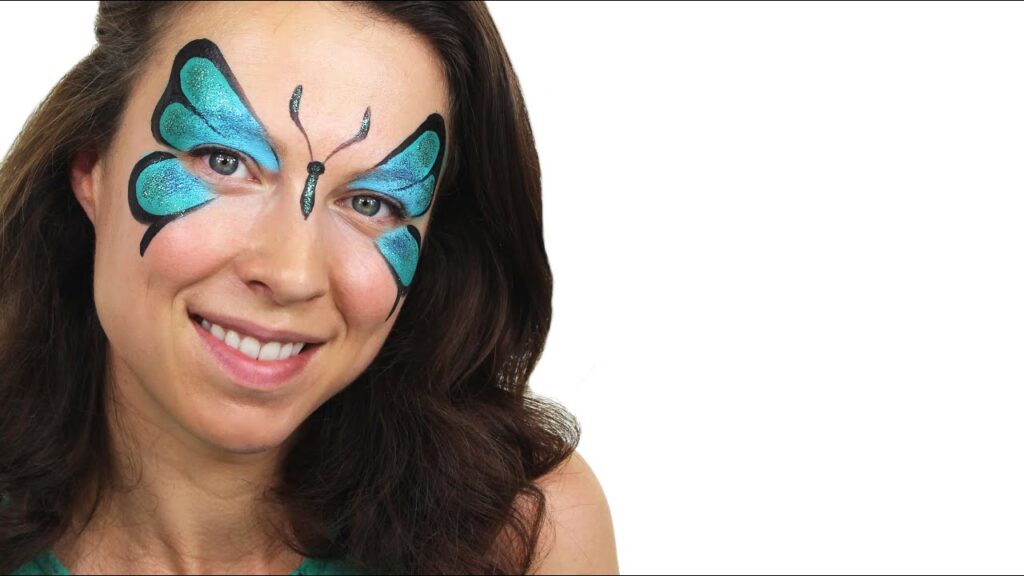
This image is property of i.ytimg.com.
Face Paint Removal and Aftercare
After a full day of face painting fun, it’s time to remove the face paint and take care of the skin. Here’s how:
Gentle and Effective Face Paint Removal
Use a gentle cleanser or baby wipes to remove face paint from the skin. Start by wiping away the majority of the face paint, then use a cotton pad soaked in warm water to remove any remaining residue. Be gentle and avoid rubbing the skin vigorously, as this can cause irritation.
Moisturizing and Soothing the Skin
After removing the face paint, it’s important to moisturize and soothe the skin. Opt for a gentle, fragrance-free moisturizer that is suitable for the face. Apply the moisturizer using light, gentle strokes and allow it to fully absorb into the skin. This will help replenish lost moisture and soothe any potential skin irritation.
Post-Painting Skincare Routine
To keep the skin in optimal condition after face painting, it is important to establish a post-painting skincare routine. This routine should include cleansing the skin thoroughly to remove any lingering traces of face paint and moisturizing to keep the skin hydrated and nourished. Sun protection is also essential, especially if you have been face painting outdoors.
Conclusion
Congratulations! You have completed this comprehensive guide to face paint tutorials. By understanding the basics, exploring different techniques, and implementing safety measures, you can unleash your creativity while ensuring a safe and enjoyable face painting experience for yourself and others. Remember to continue learning and practicing to improve your skills and create even more amazing face paint designs. So, grab your brushes, paints, and sponges, and let your imagination run wild. Enjoy the transformative power of face painting and have fun!
